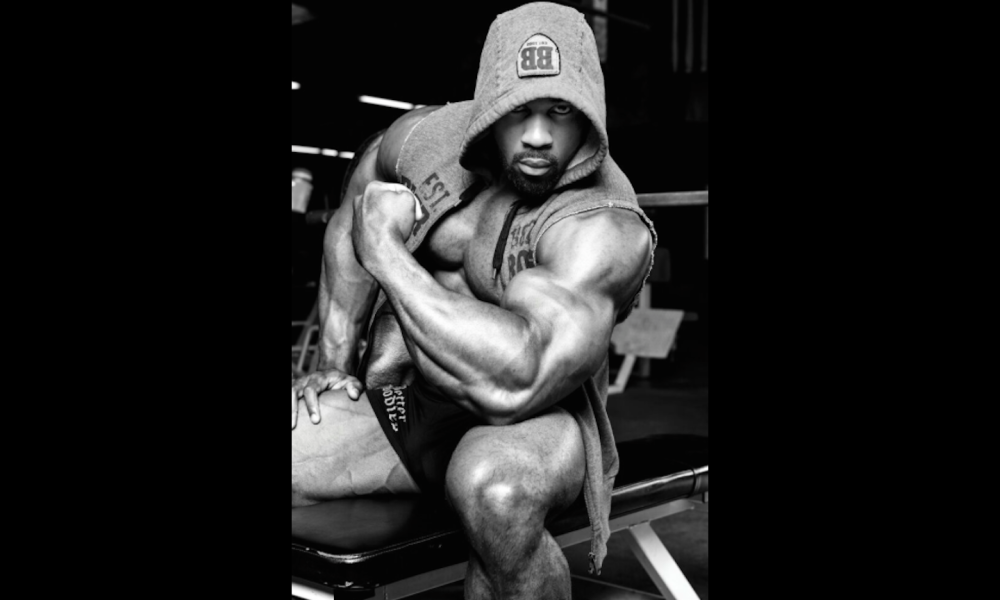

Every gym has a guy who has the biggest arms—the man with the largest biceps and triceps. Here’s a two-week challenge for that man, or for any guy who wants bigger arms—quickly.
“20 1/8 Inches!”
That’s what Truck Brown’s left arm measured on the first contraction, in an unpumped, cold condition. A muscular 20-inch arm is almost big beyond belief. You have to see one up close to comprehend it—and Edwin “Truck” Brown had one for the first time in his life.
“I’ve been working out for more than 25 years,” said the 5’10”, 238-pound 43-year-old, “but my arms have never before been so big. And get this: I’ve been training on Dr. Darden’s X-Force, Negative-Accentuated Routine for only two weeks.”
Understand that Truck is not on growth drugs, nor has he ever taken any—and he has not entered a bodybuilding contest in 15 years. Like millions of guys who consider themselves bodybuilders, Truck reads the muscle magazines but trains for his own satisfaction and personal goals.
It’s my belief that newly discovered techniques involving negative-accentuated training, which I’ll discuss later, are powerful stimulators of muscular size. This type of exercise, properly understood and strictly practiced, has the potential to take a natural, drug-free trainee to a higher level of growth than was possible in the past.
Before I describe this unusual arm routine, however, let me supply some background to set the stage.
Examining the Roots
Arthur Jones, who invented the popular Nautilus machines back in the 1970s, was fond of saying, “If you want to make an impression on people, don’t begin your campaign at the bottom, or even the middle—start at the top.”
Jones introduced his initial Nautilus machines at the ’70 AAU Mr. America contest in California because he wanted to get the attention of the best-known bodybuilders in the world. Soon he made contact with such men as Bill Pearl, Boyer Coe, Red Lerille, Sergio Oliva, Franco Columbu, Arnold Schwarzenegger and a teenager named Casey Viator, who—with Jones’s help—would win the Mr. America title in 1971.
Jones knew that the bodybuilders with the biggest arms were, in fact, the best subjects for his equipment, especially his initial biceps/triceps machine. “A large muscular arm can be more thoroughly congested with growth stimulation than a small arm,” he would say, “and you can see with your naked eye the growth effects on larger arms much better than smaller arms.”
Thus, I was looking for the man with the largest arms at Gainesville Health & Fitness, where I was involved in a research project related to training people on a new type of exercise equipment that contained a tilting weight stack. The tilting weight stack enabled you to perform the negative phase of a repetition with 40-percent more resistance. It was called X-Force.
A Little About X-Force
X-Force equipment, manufactured in Stockholm, is only available at two places in the United States. One is Roger Schwab’s Main Line Health & Fitness in Bryn Mawr, Pennsylvania, and the other is Joe Cirulli’s Gainesville Health & Fitness in Gainesville, Florida. The X-Force machines in the two clubs are working prototypes.
I met Mats Thulin, the inventor of X-Force, in 1984. He was a distributor of Nautilus equipment throughout Scandinavia. After he developed the concept of a tilting weight stack supplying 40-percent more resistance on the negative phase, he invited me to Sweden in 2008 to try the equipment. I was impressed and helped him get his X-Force equipment into Schwab’s and Cirulli’s fitness centers.
Throughout 2012, I used Cirulli’s club in Gainesville as my home base for research with X-Force equipment. In fact, my work with 145 members of Cirulli’s club will be published in April 2014 in a 336-page book, The Body Fat Breakthrough: Tap the Muscle-Building Power of Negative Training and Lose Up to 30 Pounds in 30 Days.
Please note that you do not need access to X-Force equipment to do this big-arms course. As you’ll see, you can apply a brand-new negative-accentuated technique to whatever equipment you have available.
The majority of my 2012 research related to fat loss and the selecting, instructing, training and dieting of fat and out-of-shape members of Gainesville Health & Fitness. In my spare time, though, I wanted to lasso the biggest bodybuilder at the club and challenge him in an unusual manner.
Edwin “Truck” Brown
Cirulli’s club in Gainesville has got to be the most populated fitness center in the United States—28,000 members at the main club, 1,000 or more of whom would classify themselves as bodybuilders. One man stood out even among the best-built bodybuilders—and that was Truck Brown.
He was a former high-school football player who had settled into a laid-back lifestyle. At one time he was married, but now he was divorced, and he had no children. His day job was in the landscape and pest-control business. His night job was devoted to training on the second floor of Gainesville Health & Fitness, where all the free-weight equipment was located. Only rarely did he, or any of the bodybuilders, walk downstairs and try the selectorized machine exercises. The X-Force equipment was at the far side of the machine area, and it was looked upon as foreign by most of them.
My idea was to get Truck involved in a special program, which I would personally supervise. If I could add some significant size to his already big arms, it would open the door for more bodybuilders to try negative-accentuated training.
I convinced Truck to trust me for two weeks. He agreed not to do any training other than my program for four workouts spread over two weeks. During my special routine, we focused on doing one set on eight X-Force machines twice a week. Each workout lasted only 15 minutes.
The results? Measurements of Truck taken on May 9, 2012, and May 24, 2012, revealed the following data:
• His bodyweight went from 234.75 to 238 pounds for a gain of 3.25 pounds.
• His percentage of bodyfat decreased from 16.4 to 12.2, for a fat loss of 9.46 pounds.
• A 9.46-pound fat loss plus a 3.25-pound bodyweight increase equals 12.71 pounds of muscle gain. That’s 0.9 pounds of muscle growth per day for 14 days, which is phenomenal.
• In other words, Truck lost fat and built muscle at the same time at a near-explosive rate.
• His right upper arm contracted went from 19.125 inches to 19.75, for an increase of 0.625 inches.
• His left upper arm contracted went from 19.5 inches to 20.125, for an increase of 0.625 inches.
• His chest went from 51 inches to 53.25, for an increase of 2.25 inches.
• His waist went from 36 inches to 34.75, for a decrease of 1.25 inches.
• His right thigh went from 25.375 inches to 26.5, for an increase of 1.125 inches.
• His left thigh went from 26 inches to 27, for an increase of one inch.
Take a look at Truck’s before-and-after photos on page 84. You can definitely see significant differences in his upper arms, waist and thighs.
If you want to experience the growth-stimulation effects of negative-accentuated training, here’s the special routine that Truck followed. As there are only two gyms in the United States that have X-Force equipment, adaptations have been made using a technique that I applied in my Breakthrough book. I call it 30-30-30.
30-30-30: Negative, Positive, Negative
This technique can be applied to any exercise or machine that produces a similar result to X-Force training. The name refers to a 30-second negative, followed by a 30-second positive, followed by a 30-second negative. In other words, your time under load is the key factor, and your goal is two 30-second negative half reps with a 30-second positive half rep in between. I’ve tried and tested 30-30-30 for more than three years.
The half reps actually vary between 20 to 30 seconds, but 30-30-30 is the goal. When you can achieve the goal on any exercise, increase the resistance by 5 to 10 percent at your next workout.
Now, here’s the kicker: You must be able to do 30-30-30 with 80 percent of the resistance that you can handle for a regular set of 10 repetitions to failure. Believe me, it will be quite challenging the first time you try it, but you should get the hang of it during your second trial.
Remember, the ideal negative-accentuated format involves twice as much negative work as positive work. That’s twice as much time, 60 seconds, on the negative vs. 30 seconds on the positive. Here are some instructional points:
• It’s best to have a spotter help you initially. On a machine exercise the spotter assists in getting the movement arm to the top position. Then, while looking at a watch or a big clock with a second hand, he or she gives you a running count on your first negative half repetition: five seconds, 10 seconds, 15 seconds (halfway down), 20 seconds, 25 seconds and 30 seconds. Reverse the movement and start a positive: five seconds, 10 seconds, 15 seconds (halfway up), 20 seconds, 25 seconds and 30 seconds. Reverse the movement and begin a finish negative: five seconds, 10 seconds, 15 seconds (halfway down), 20 seconds, 25 seconds and 30 seconds. Smoothly stop.
• In free-weight exercises, such as the barbell curl and dumbbell triceps extension, a spotter can assist you in getting the resistance to the top, or you can simply cheat the weight into position. On the chinup and dip you’ll need a box at the bottom, which enables you to use your legs to step up into the top position.
• Your spotter also has to be attentive to your slow movements. If you get stuck (it will probably occur initially during the positive portion), he or she needs to assist you just enough to get you through a certain range and back off. Be sure to record your stopping accurately. For example, if you did 30 seconds on the negative, 22 seconds on the positive and 30 seconds on the negative, your notation on your workout sheet would be 30-22-30. When you can finally achieve 30-30-30, increase the resistance at your next workout.
• Proper breathing is essential for success with slow, negative-accentuated repetitions. The key is to take short, shallow breaths. You should emphasize exhalation more than inhalation, especially during the finish negative. It’s especially important that you don’t hold your breath.
Follow the guidelines suggested below in performing these negative-accentuated 30-30-30 routines.
Negative-Accentuated Workouts for Arms
There are two routines, A, which you perform on Monday, and B, which you do on Thursday. Both involve stacking exercises in twos and threes, with minimum rest between the stacked exercises.
Routine A begins with a bang. The chinups and dips, performed 30-30-30, will get your attention in an eye-opening way.
Routine A
1) Chinups, 30-30-30
2) Dips, 30-30-30
3) Barbell curls, 30-30-30
Immediately followed by
4) Lat pulldowns, 30-30-30
5) Dumbbell triceps extensions,
30-30-30
Immediately followed by
6) Barbell bench presses, 30-30-30
7) Machine leg curls, 30-30-30
Immediately followed by
8) Leg presses, 30-30-30
1) Chinups, 30-30-30: Organize your chinning bar with a sturdy box or bench at the bottom so you can step up to the top. Climb into the top position with your chin above the bar. Hold the bar with an underhand grip and space your hands shoulder-width apart. Have a watch or a big clock with a second hand in plain sight, or have a spotter help with the counting. Remove your feet from the chair or bench, and stabilize your body.
Lower your body by unbending your arms slowly, inch by inch. Be halfway down at 15 seconds. Lean back slightly and look up. Your knees should be bent and your ankles crossed. Continue to lower inch by inch until you reach a dead-hang position. Try to get there in 30 seconds. Perform the turnaround smoothly, and begin the positive phase.
Bend your arms slowly, one by inch, and be halfway up at 15 seconds. Try to reach the top at 30 seconds. If you can’t do a slow, 30-second positive, you’ll have to do it faster: in 10, 12 or 15 seconds. Perform the turnaround at the top, and start the finish negative.
Again, try to be halfway down at 15 seconds and all the way down in a dead hang at 30 seconds. Put your feet back on the chair or bench, and exit the chinning bar.
2) Dips, 30-30-30: Place a box or a bench between the parallel dipping bars. Climb to the top position, and straighten your arms. Note: The bottom, finish position occurs when the backs of your upper arms, viewed from the side, dip below your elbows. You reverse the movement at that point. Have a watch or a big clock with a second hand in plain sight or a spotter to help with the counting. Remove your feet from the chair, and stabilize your body.
Follow the 30-30-30 instructions described above.
3) Barbell curls, 30-30-30: Load a barbell with an appropriate weight, about 80 percent of what you can normally curl for 10 repetitions. Take a shoulder-width underhand grip on the bar. As you stand with the barbell, use some upward momentum, and curl the weight efficiently to your shoulders. Anchor your elbows firmly against your sides, and begin the negative.
Follow the 30-30-30 instructions described above; then place the barbell on the floor, stand, and move immediately to the lat pulldown.
4) Lat pulldowns, 30-30-30: Grasp the pulldown bar on a lat machine with a shoulder-width underhand grip, and be seated. Stabilize your lower body properly. Pull the bar down to your chest efficiently, which lifts the resistance, and ready yourself for the negative.
Pause briefly with the bar touching your upper chest. Your elbows should be down and back and holding steady. Unbend your arms and begin. Follow the 30-30-30 instructions described above.
5) Dumbbell triceps extensions, 30-30-30: Sit on a bench. Grasp a dumbbell at one end with both hands. Press it overhead. Pull your elbows in tight and keep them close to your ears throughout the exercise. Bend your elbows and follow the standard 30-30-30 instructions. Only your forearms and hands should move. When you finish, move quickly to the bench press.
6) Barbell bench presses, 30-30-30: Set up a barbell with an appropriate resistance on the support racks of a flat bench. Lie on your back on the bench. Grasp the barbell with your hands slightly wider than your shoulders. Straighten your arms and bring the barbell to a supported position above your sternum. Now follow the standard 30-30-30 instructions.
7) Machine leg curls, 30-30-30: There are several versions—lying, seated and kneeling. The most popular is the lying leg curl. Lie facedown on the leg curl machine with your knees on the pad edge. Hook your heels and ankles under the roller pad. Make sure your knee joints are in line with the axis of rotation of the movement arm. Grasp the handles on the edge of the bench to steady your upper body. On your own or with a spotter’s assistance, get the movement arm efficiently to the contracted position. Follow the 30-30-30 instructions above, and then move immediately to the leg press machine.
8) Leg presses, 30-30-30: There are many versions of the leg press machine. This one requires a diagonal movement arm, or footboard. Sit in the machine with your back against the angled pad and your buttocks on the seat bottom. Place your feet on the footboard, with your heels a shoulder-width apart and your toes pointed slightly outward. Straighten your legs and release the stop bars of the machine (be sure to lock them at the end of your set to secure the footboard). Grasp the handles beside the seat or the edge of the seat during the exercise, and follow the standard 30-30-30 instructions.
Focus intensely and remember: You have more strength during the negative than the positive. If you just completed a 30-second positive, you’re still strong enough to do a final 30-second negative. Doing it successfully is key.
If you are like most trainees who have just completed their first negative-accentuated routine, you’ll want plenty of water, followed by a carbohydrate-rich snack and a long nap.
Routine B provides two stacks of three exercises and one stack of two, while Routine A includes three stacks of two exercises. Here’s a look at Routine B.
Routine B
1) Barbell curls, 30-30-30
Immediately followed by
2) Lat pulldowns, 30-30-30
Immediately followed by
3) Negative-only chins, 1 half rep performed very slowly for 30-60 seconds
4) Dumbbell triceps extensions,
30-30-30
Immediately followed by
5) Barbell bench presses,
30-30-30
Immediately followed by
6) Negative-only dips, 1 half rep performed very slowly for 30-60 seconds
7) Leg extensions, 30-30-30
Immediately followed by
8) Leg presses, 30-30-30
Perform all of these exercises in the 30-30-30 manner described above except the negative-only chins and dips. For those you do the negative, or lowering, stroke only for 30 seconds.
Your Best Effort
Those are the instructions. Try a practice session with the slow chins and dips, since each requires a little learning. A training partner is also helpful. Make sure you place a barbell for the biceps curls next to the lat machine or chinning bar and the dumbbell for the triceps extensions near the bench press or parallel bars. It’s important to move quickly from one exercise to the next.
Remember, you do only four workouts spread over two weeks. Give each exercise and each routine your best effort.
Rest is equally important. Four workouts in 14 days means 10 days of rest. That’s right: 10 days of no training. Muscular growth does not occur during the training. It happens during rest, usually while you are asleep.
Try to get nine hours of sleep each night—and even a daily nap, if possible.
Get good nutrition, and don’t skimp on calories. I reinforce the concept of eating small and medium-sized meals more frequently and staying well hydrated. That’s exactly what Truck did, and even though he ate plenty of calories, he still lost bodyfat daily as he gained muscle.
Losing fat while building muscle is one of the remarkable results of properly performed negative-accentuated exercise.
Proof Positive in Negative Training
Truck Brown’s results got the bodybuilders at Gainesville Health & Fitness talking all kinds of trash. Once I had their attention, I was able to recruit a group of 15 bodybuilders to go through a full six-week negative-accentuated program.
In Part 2 of this discussion I’ll share the results of that study, with more before-and-after photos and measurements. I’ll also connect the study to my main research in Gainesville, which unraveled the importance of negative work and hormone stimulation (see the sidebar on page 89), and present detailed routines and recommendations for fat loss at “breakthrough” rates that go beyond anything I’ve experienced in my four decades of doing research.
Editor’s note: Ellington Darden, Ph.D., is the author of more than 50 books, including The Nautilus Book, The Nautilus Advanced Bodybuilding Book, Massive Muscles in 10 Weeks, A Flat Stomach ASAP and The New High-Intensity Training. His latest book covers his research at Gainesville Health & Fitness, The Body-Fat Breakthrough: Tap the Muscle-Building Power of Negative Training and Lose Up to 30 Pounds in 30 Days. IM







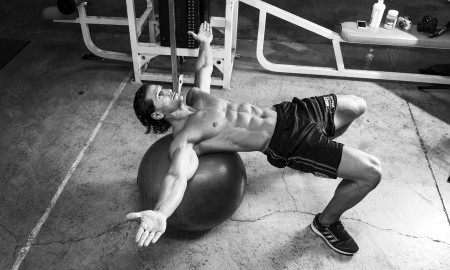
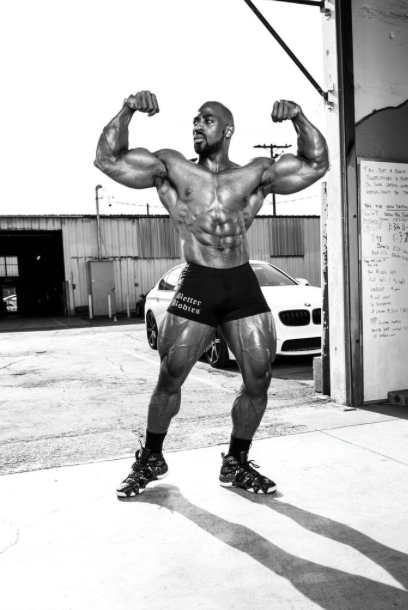
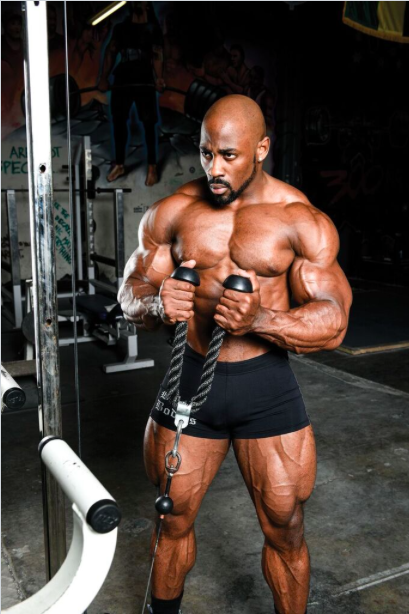
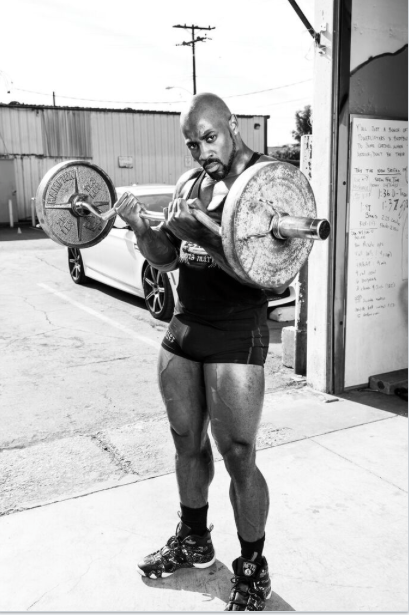













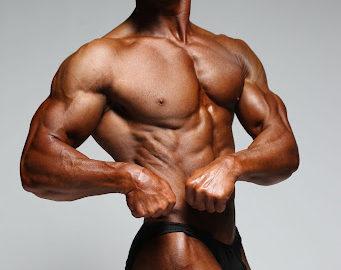
You must be logged in to post a comment Login